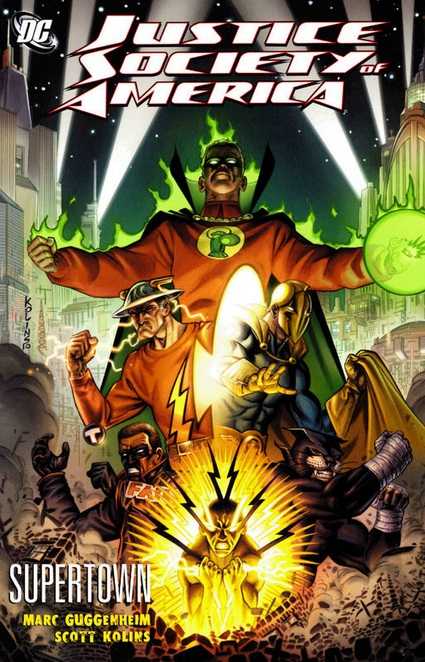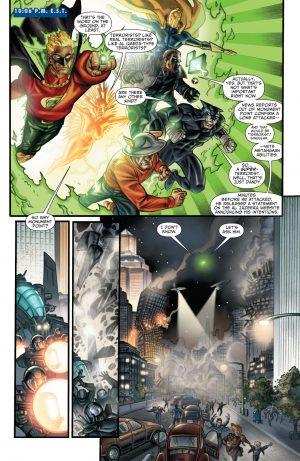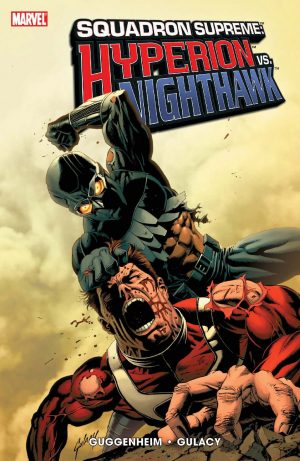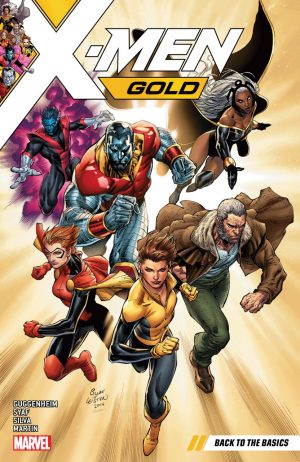Review by Frank Plowright
Marc Guggenheim picks up the Justice Society’s continuity after the team fractured pretty well down the middle, unable to agree on several principle matters in Bad Seed, although Axis of Evil slots between that and Supertown. Guggenheim’s chosen focus is the Flash, Jay Garrick, the first speedster to assume the identity and thanks to mystical jiggery pokery, still active seventy years after his career began during World War II. He’s a beacon of integrity, looked up to by those well beyond the superhero community, and his consideration of the consequences of what he did in the past and how that’s affected the devastation of Monument Point in the present day propel the plot.
Scott Kolins’ art has evolved throughout his career, but not always for the best, and the fully rendered approach to the characters with odd blobs of shading isn’t crowd-pleasing Kolins. His panels are cramped and his characters oddly formed in places. It’s as if changing his approach means stylistic quirks that he previously relied on now register as out of place. Mike Norton steps in for a chapter imitating what Kolins is doing, but distilling that still further just results in even more disappointing pages.
If Kolins disappoints, so does Guggenheim, but in his case more because the execution falls short of the concepts, raising expectations and not being able to meet them. He introduces some interesting themes. What happens to a city devastated by a superhero battle after the superheroes have moved on? How far are superheroes attempting to protect people responsible for that devastation? One of the villains is intriguing and confidently provocative, and Guggenheim’s treatment of the cast works well, taking those able to affect things the most off the table and giving the others their own weakness. Balanced against that is the other villain being a charisma-free zone despite the ethical issues circling him, and matters never really gelling. Plot points keep nagging. Why someone behaves in a particular way often puzzles, and no answers are forthcoming here.
Guggenheim completes his main plot in Supertown, but needs a rabbit from the hat to do it. Could he have done better? Also disappointing is that all the subplots/cliffhangers are carried over to Monument Point. Sadly, that’s even worse.





